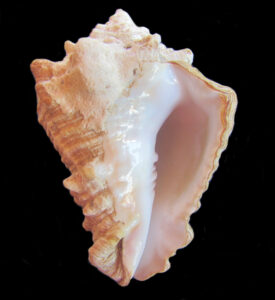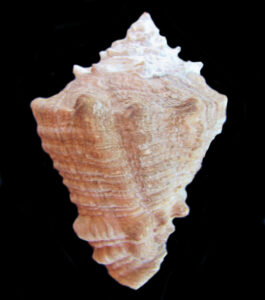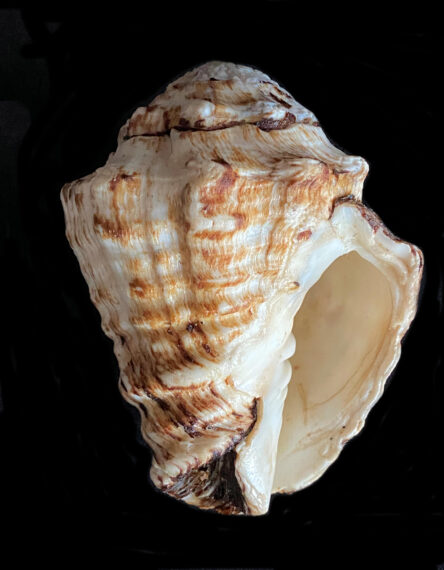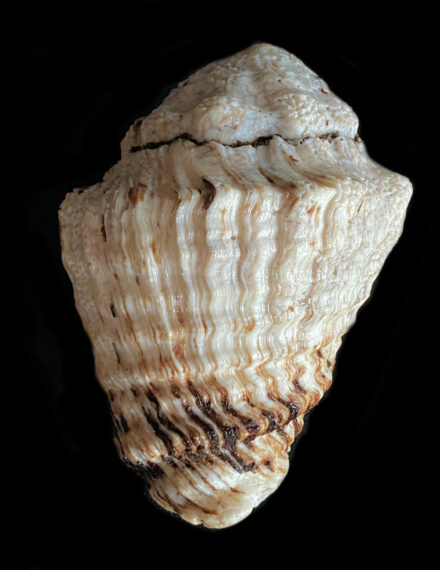Gauntlet Vase Shell, Vasum caestus

 Gauntlet Vase Shell, Vasum caestus. Shell provided by the commercial fishermen of the greater Los Cabos area, Baja California Sur, March 2011. Size: 8.0 cm (3.1 inches) x 5.6 cm (2.2 inches).
Gauntlet Vase Shell, Vasum caestus. Shell provided by the commercial fishermen of the greater Los Cabos area, Baja California Sur, March 2011. Size: 8.0 cm (3.1 inches) x 5.6 cm (2.2 inches).

 Gauntlet Vase Shell, Vasum caestus. Shell courtesy of a commercial fisherman Punta Chivato, Baja California Sur, January 2023. Size: 12.4 cm (4.4 inches) x 9.4 cm (3.7 inches). Photograph and Identification courtesy of Colin Campbell, DVM, Punta Chivato, Baja California Sur.
Gauntlet Vase Shell, Vasum caestus. Shell courtesy of a commercial fisherman Punta Chivato, Baja California Sur, January 2023. Size: 12.4 cm (4.4 inches) x 9.4 cm (3.7 inches). Photograph and Identification courtesy of Colin Campbell, DVM, Punta Chivato, Baja California Sur.
The Gauntlet Vase, Vasum caestus (Broderip, 1833), is gastropod mollusk that is a member of the Turbinellidae Family of Pagoda and Vase Shells. They are also known as the Panamanian Vase and the Panamic Vase and in Mexico as the turbinela manopla. The shell is heavy and solid and diamond-shaped, with six or seven whorls with strong spiral ridges, a moderately high, pointed spire, a broad shoulder marked with blunt spines, a tapering body whorl and a long aperture that tapers from top to bottom that has a lip marked with folds. The exterior surface is white but they are normally covered by a thick, brown, periostracum. Gauntlet Vase Shells reach a maximum of 12.4 cm (4.9 inches) in length and 9.4 cm (3.4 inches) in height established by the shell photographed above.
Gauntlet Vase Shells are found on and within sand substrate in the intertidal zone to depths up to 55 m (180 feet). They are similar to Rock Shells of the Thais Genus which lack folds on the lip of the aperture. They range from Punta Chivato (as documented by the shell photographed above), Baja California Sur to Peru, including the Galapagos Islands. They have not been documents as present along the West Coast of Baja.
A synonym is Turbinella caestus.